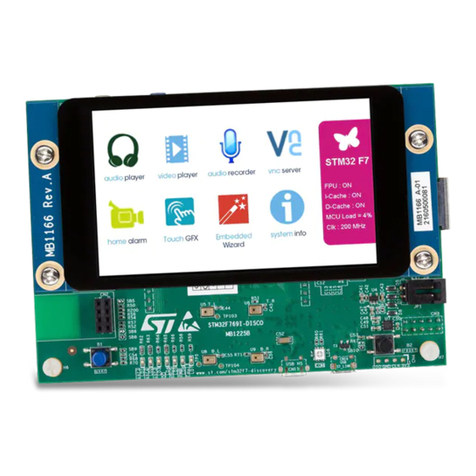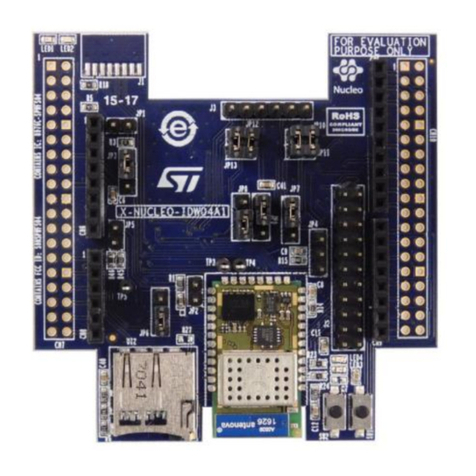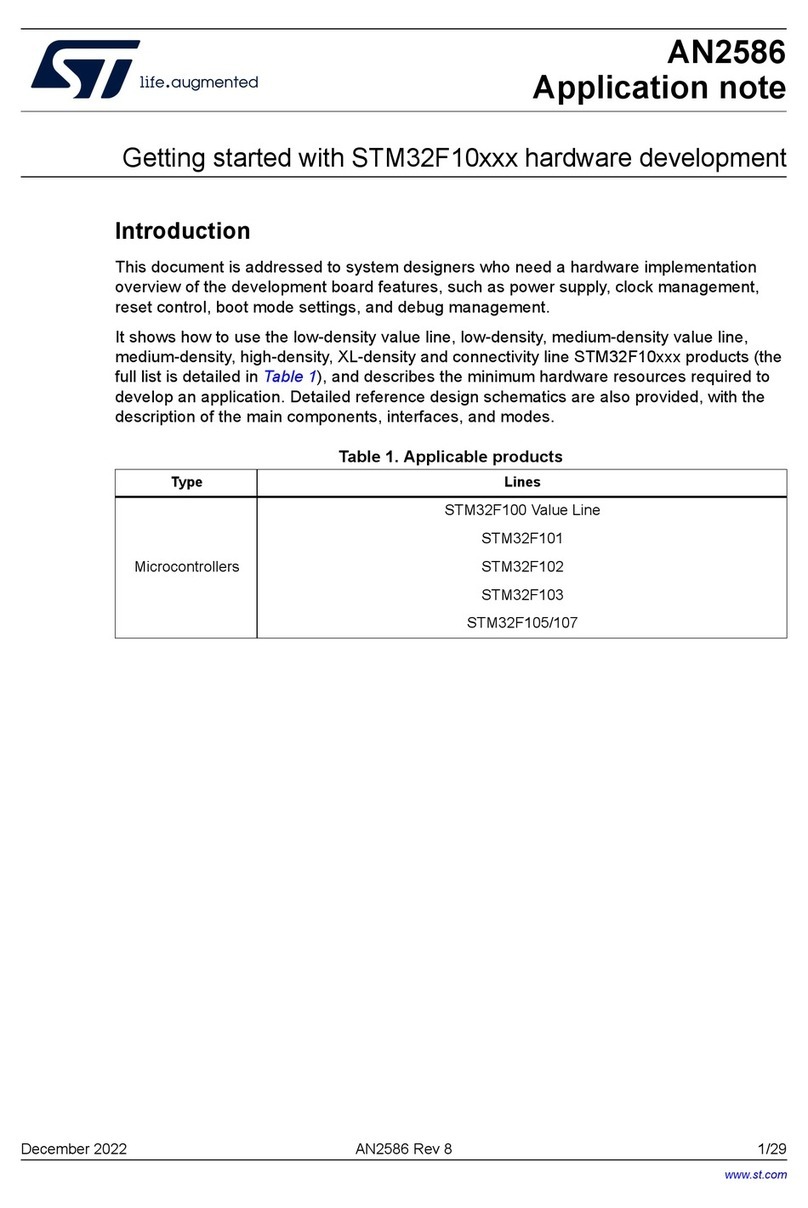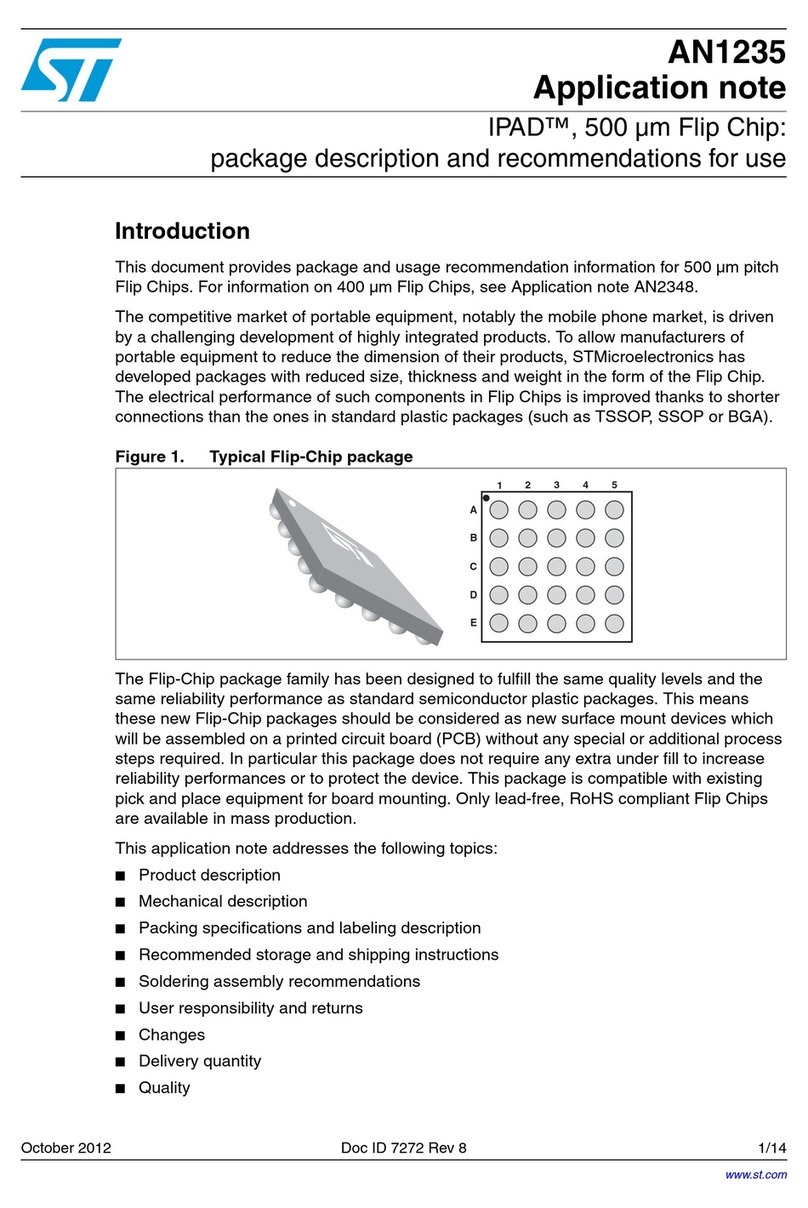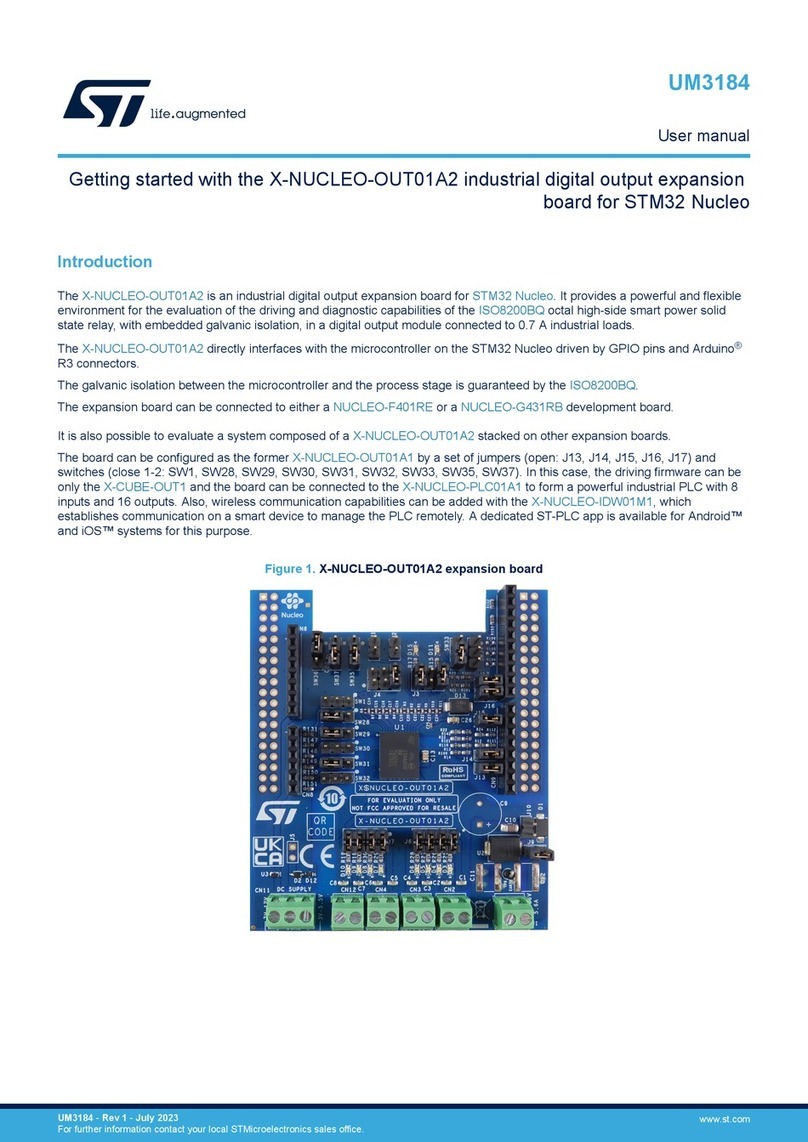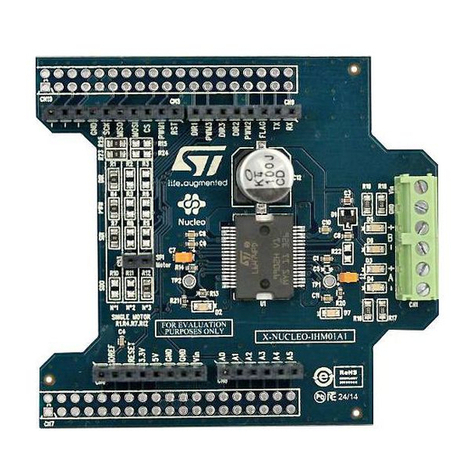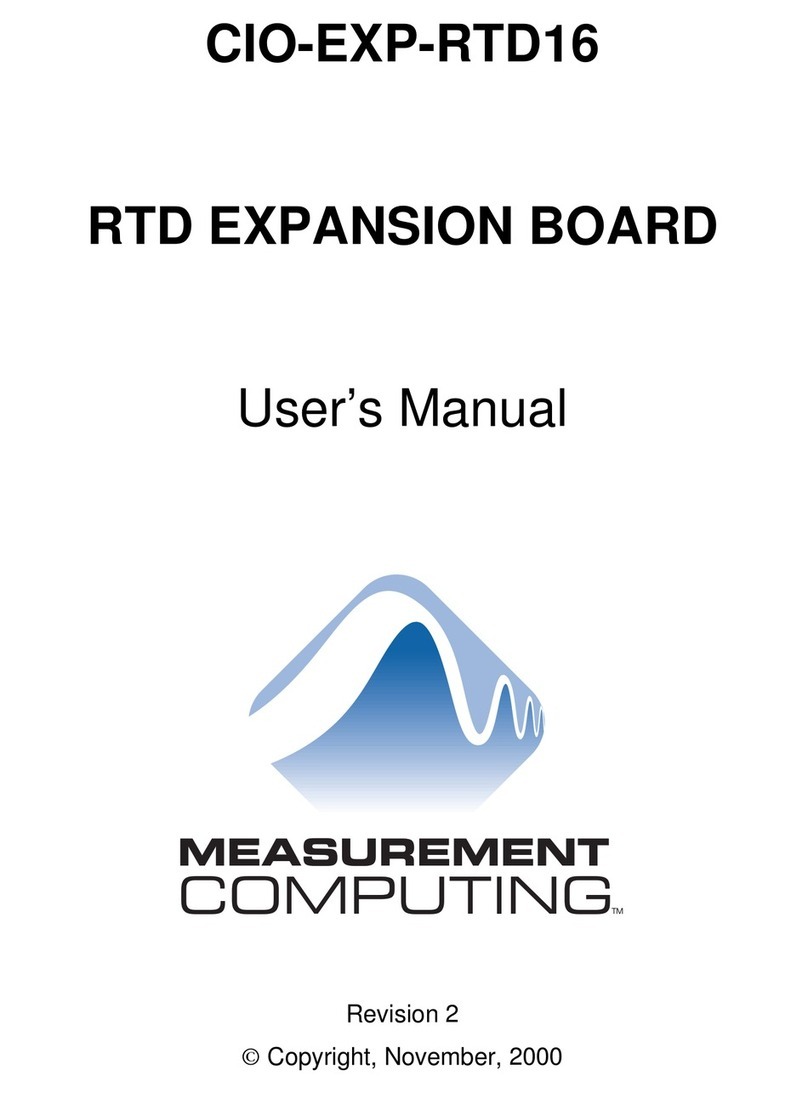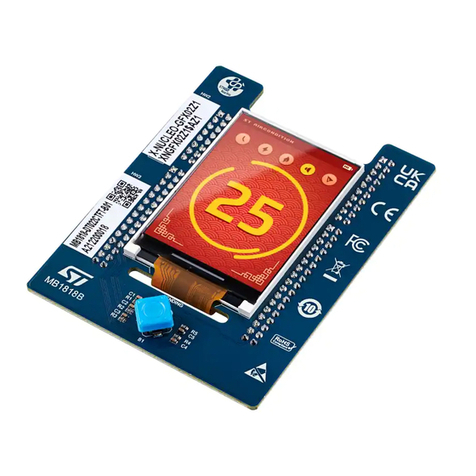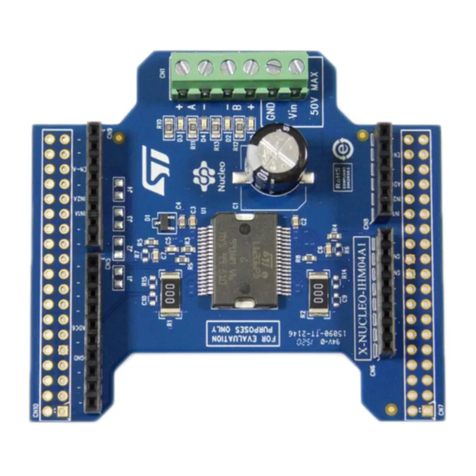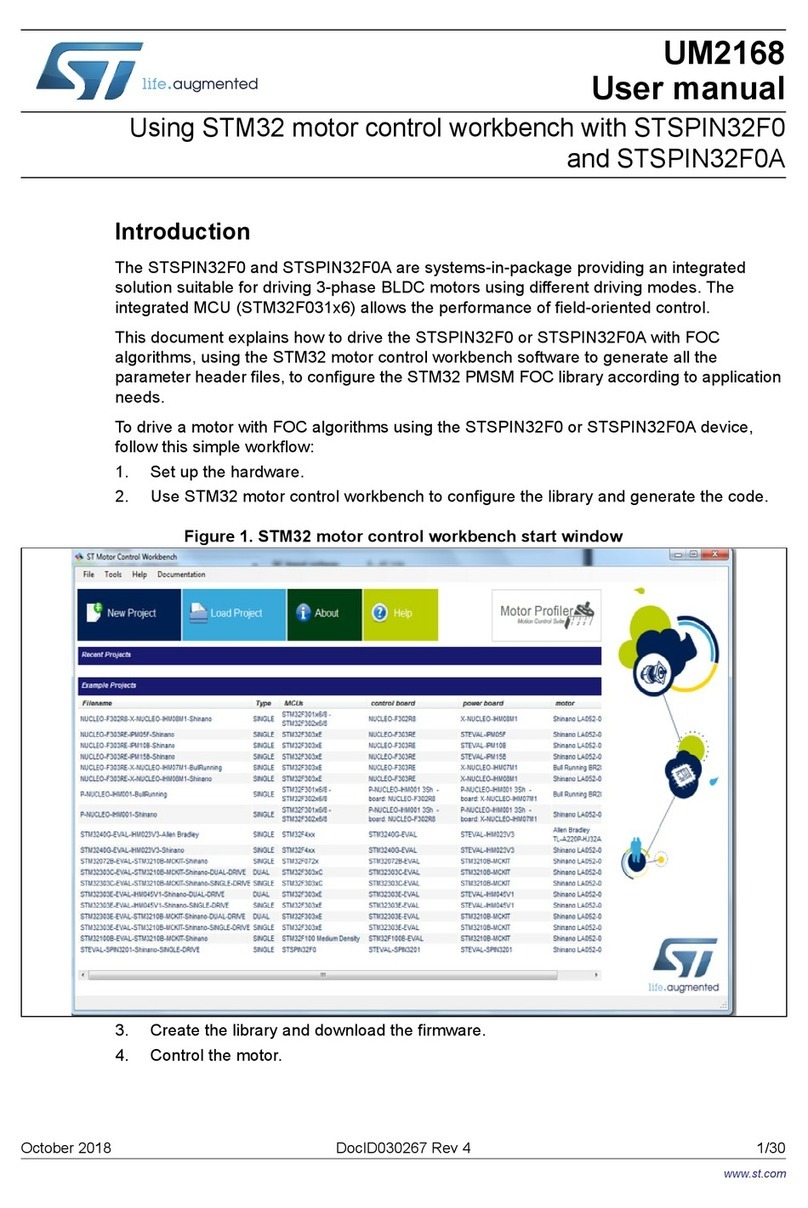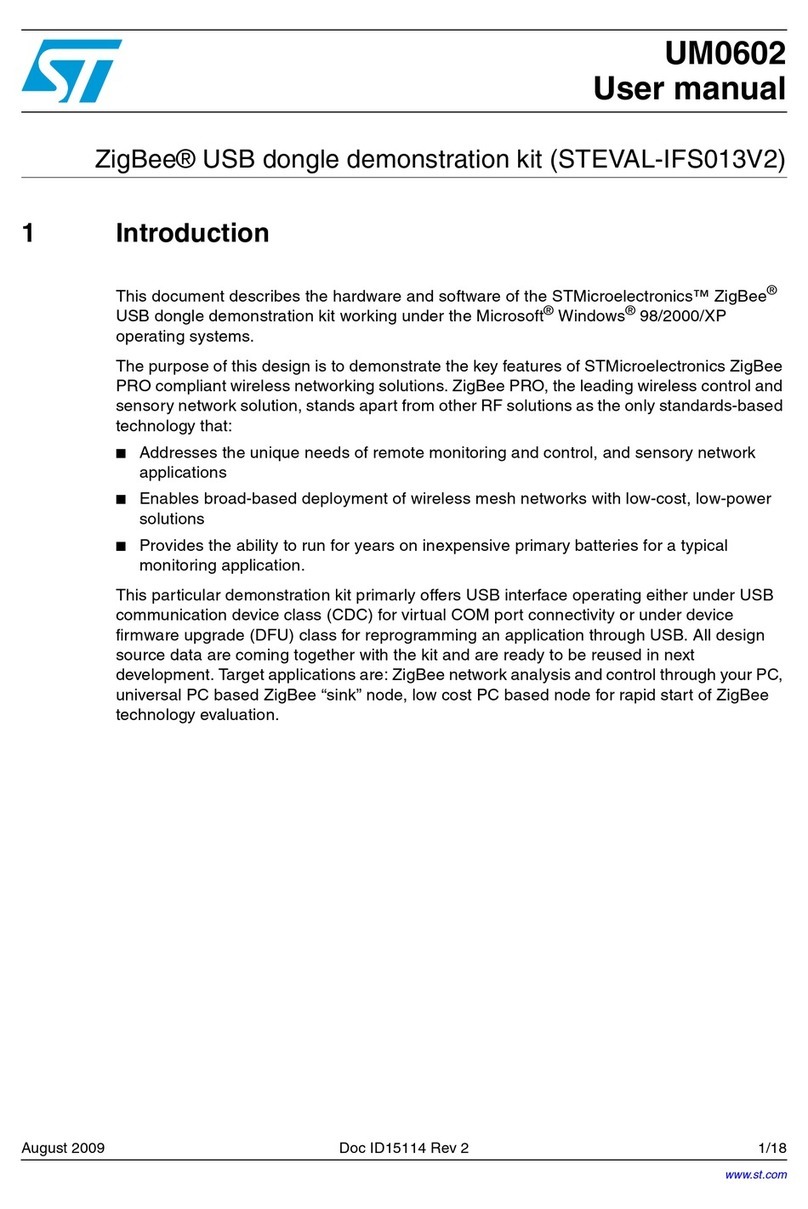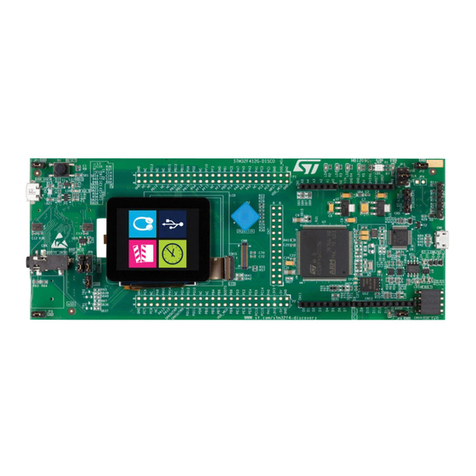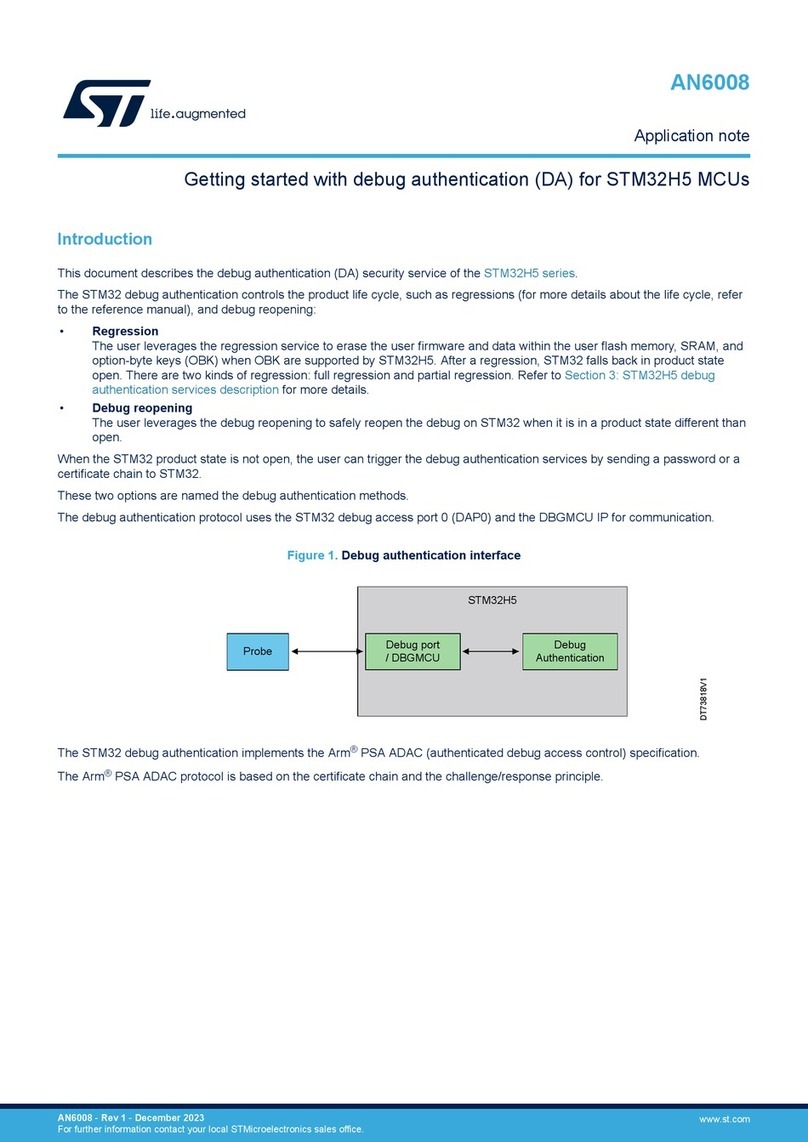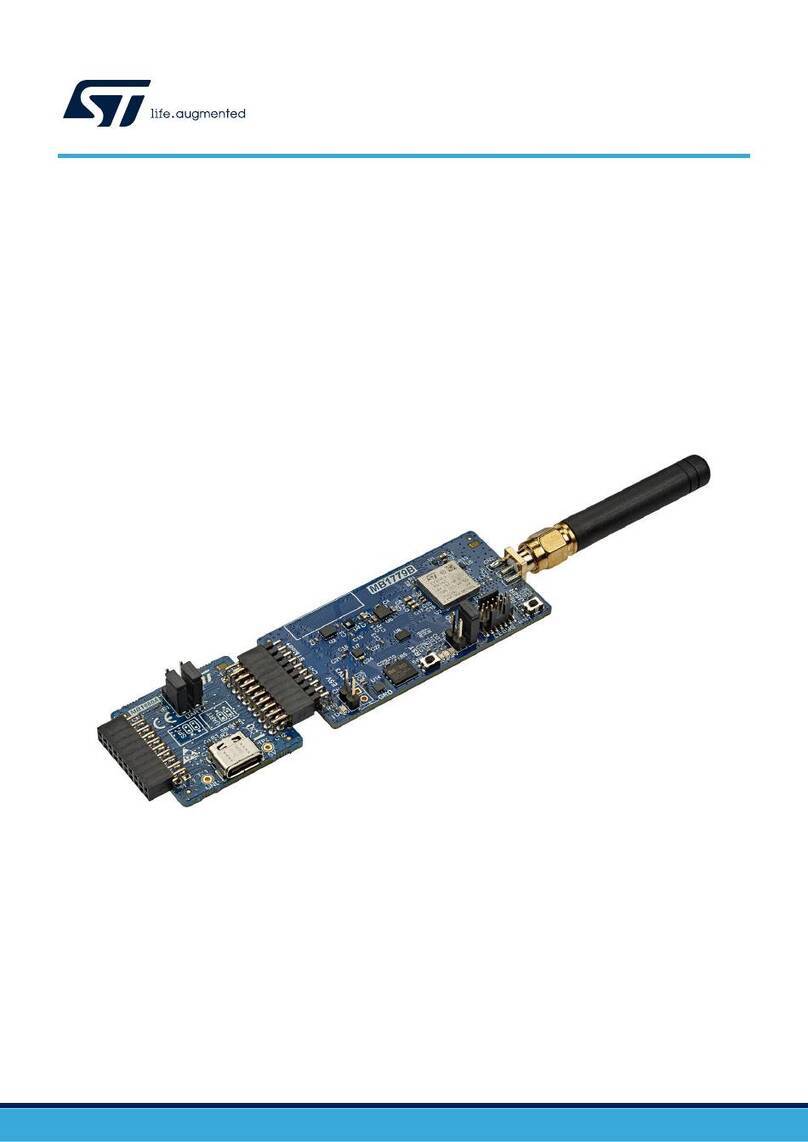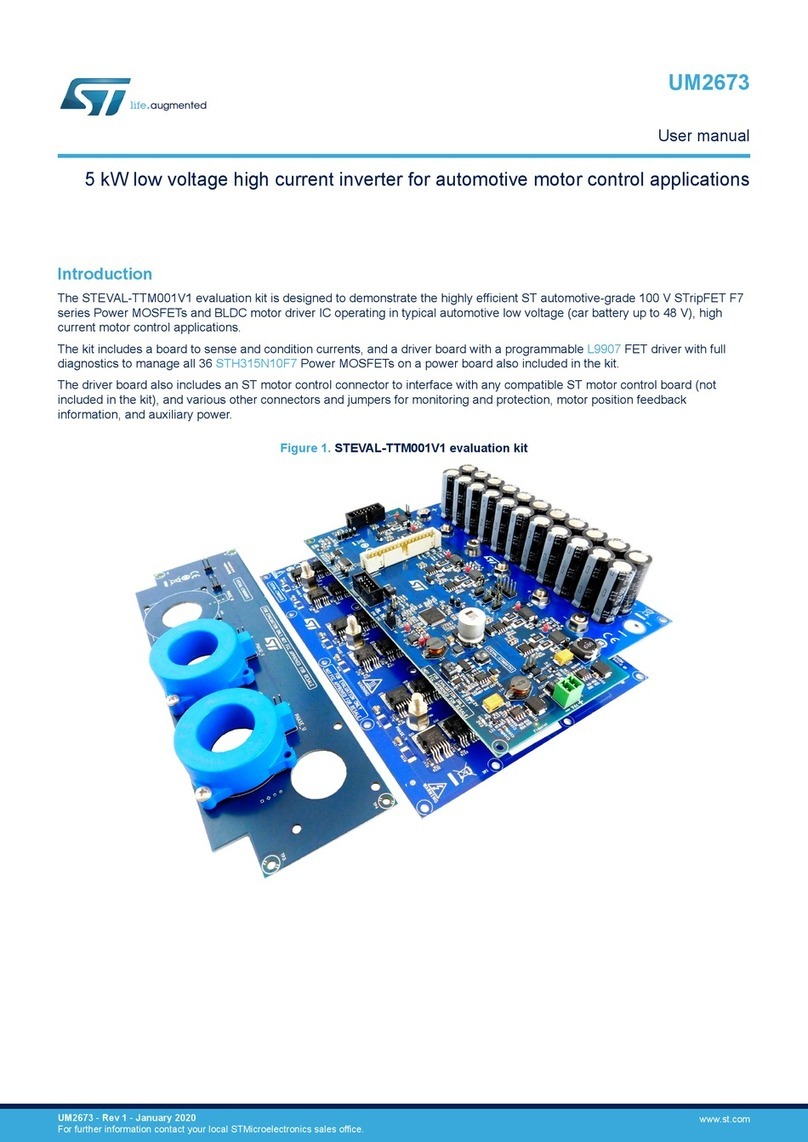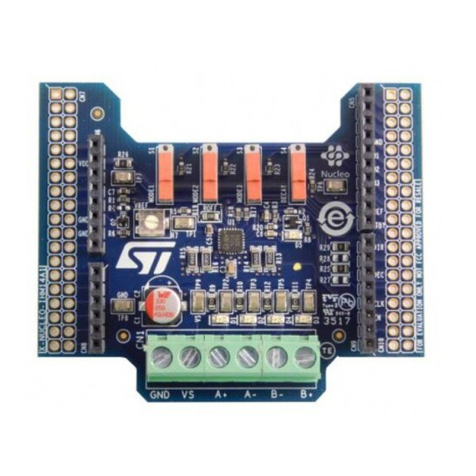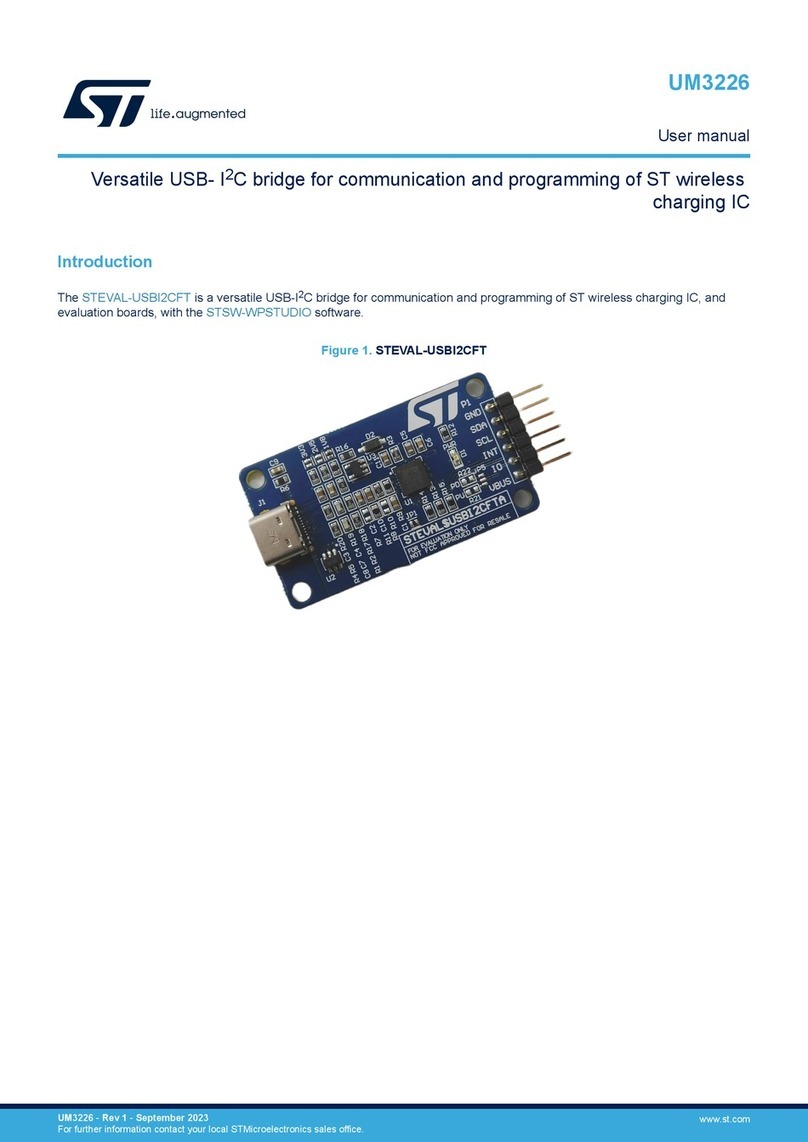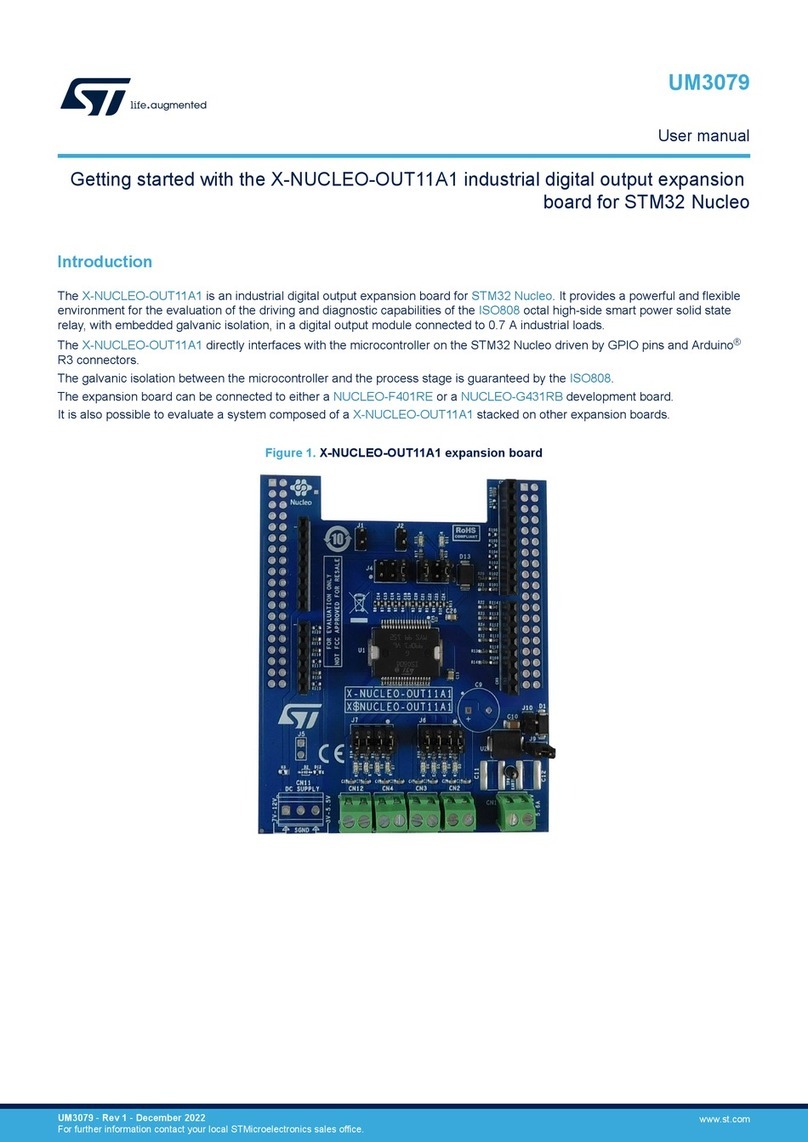
UM2262 Rev 6 7/94
UM2262 List of figures
8
List of figures
Figure 1. Secure Boot Root of Trust . . . . . . . . . . . . . . . . . . . . . . . . . . . . . . . . . . . . . . . . . . . . . . . . . 15
Figure 2. Typical in-field device update scenario. . . . . . . . . . . . . . . . . . . . . . . . . . . . . . . . . . . . . . . . 15
Figure 3. KMS functions overview . . . . . . . . . . . . . . . . . . . . . . . . . . . . . . . . . . . . . . . . . . . . . . . . . . . 19
Figure 4. SBSFU security IPs vs. STM32 Series (1 of 2). . . . . . . . . . . . . . . . . . . . . . . . . . . . . . . . . . 20
Figure 5. SBSFU security IPs vs. STM32 Series (2 of 2). . . . . . . . . . . . . . . . . . . . . . . . . . . . . . . . . . 21
Figure 6. STM32L4 and STM32L0 protection overview during SBSFU execution . . . . . . . . . . . . . . 22
Figure 7. STM32F4, STM32F7 and STM32L1 protection overview during SBSFU execution . . . . . 24
Figure 8. STM32G0, STM32G4 and STM32H7 protection overview during SBSFU execution. . . . . 26
Figure 9. STM32G0, STM32G4, and STM32H7 protection overview
during user application execution . . . . . . . . . . . . . . . . . . . . . . . . . . . . . . . . . . . . . . . . . . . . 29
Figure 10. STM32WB protection overview during SBSFU execution . . . . . . . . . . . . . . . . . . . . . . . . . 30
Figure 11. STM32L4 / STSAFE-A100 protection overview during SBSFU execution . . . . . . . . . . . . . 32
Figure 12. Software architecture overview. . . . . . . . . . . . . . . . . . . . . . . . . . . . . . . . . . . . . . . . . . . . . . 36
Figure 13. Project folder structure (1 of 2) . . . . . . . . . . . . . . . . . . . . . . . . . . . . . . . . . . . . . . . . . . . . . . 41
Figure 14. Project folder structure (2 of 2) . . . . . . . . . . . . . . . . . . . . . . . . . . . . . . . . . . . . . . . . . . . . . . 42
Figure 15. Application compilation steps . . . . . . . . . . . . . . . . . . . . . . . . . . . . . . . . . . . . . . . . . . . . . . . 43
Figure 16. Firmware image preparation tool IDE integration . . . . . . . . . . . . . . . . . . . . . . . . . . . . . . . . 45
Figure 17. Step-by-step execution . . . . . . . . . . . . . . . . . . . . . . . . . . . . . . . . . . . . . . . . . . . . . . . . . . . . 46
Figure 18. STM32 board preparation. . . . . . . . . . . . . . . . . . . . . . . . . . . . . . . . . . . . . . . . . . . . . . . . . . 47
Figure 19. STM32CubeProgrammer connection menu . . . . . . . . . . . . . . . . . . . . . . . . . . . . . . . . . . . . 48
Figure 20. STM32CubeProgrammer Option bytes screen. . . . . . . . . . . . . . . . . . . . . . . . . . . . . . . . . . 49
Figure 21. STM32CubeProgrammer erasing . . . . . . . . . . . . . . . . . . . . . . . . . . . . . . . . . . . . . . . . . . . . 49
Figure 22. Tera Term connection screen . . . . . . . . . . . . . . . . . . . . . . . . . . . . . . . . . . . . . . . . . . . . . . . 50
Figure 23. Tera Term setup screen . . . . . . . . . . . . . . . . . . . . . . . . . . . . . . . . . . . . . . . . . . . . . . . . . . . 51
Figure 24. SBSFU welcome screen display. . . . . . . . . . . . . . . . . . . . . . . . . . . . . . . . . . . . . . . . . . . . . 52
Figure 25. SBSFU encrypted firmware transfer start . . . . . . . . . . . . . . . . . . . . . . . . . . . . . . . . . . . . . . 53
Figure 26. SBSFU encrypted firmware transfer in progress . . . . . . . . . . . . . . . . . . . . . . . . . . . . . . . . 53
Figure 27. SBSFU reboot after encrypted firmware transfer . . . . . . . . . . . . . . . . . . . . . . . . . . . . . . . . 54
Figure 28. User application execution . . . . . . . . . . . . . . . . . . . . . . . . . . . . . . . . . . . . . . . . . . . . . . . . . 55
Figure 29. Encrypted firmware download via user application. . . . . . . . . . . . . . . . . . . . . . . . . . . . . . . 56
Figure 30. User application test protection menu . . . . . . . . . . . . . . . . . . . . . . . . . . . . . . . . . . . . . . . . 57
Figure 31. Firewall call gate mechanism . . . . . . . . . . . . . . . . . . . . . . . . . . . . . . . . . . . . . . . . . . . . . . . 61
Figure 32. Secure Engine call-gate mechanism . . . . . . . . . . . . . . . . . . . . . . . . . . . . . . . . . . . . . . . . . 62
Figure 33. Secure Engine interface . . . . . . . . . . . . . . . . . . . . . . . . . . . . . . . . . . . . . . . . . . . . . . . . . . . 63
Figure 34. SBSFU running in unprivileged level of software execution for standard operations . . . . . 64
Figure 35. SBSFU requesting a Secure Engine service . . . . . . . . . . . . . . . . . . . . . . . . . . . . . . . . . . . 65
Figure 36. Exiting a Secure Engine service . . . . . . . . . . . . . . . . . . . . . . . . . . . . . . . . . . . . . . . . . . . . . 66
Figure 37. Internal user Flash mapping (example of the NUCLEO-L476RG with 512-byte headers) . 68
Figure 38. User application vector table (example of the STM32L4 Series) . . . . . . . . . . . . . . . . . . . . 69
Figure 39. Asymmetric verification and symmetric encryption . . . . . . . . . . . . . . . . . . . . . . . . . . . . . . . 72
Figure 40. Symmetric verification and encryption . . . . . . . . . . . . . . . . . . . . . . . . . . . . . . . . . . . . . . . . 73
Figure 41. X509 asymmetric verification . . . . . . . . . . . . . . . . . . . . . . . . . . . . . . . . . . . . . . . . . . . . . . . 74
Figure 42. Certificate chain . . . . . . . . . . . . . . . . . . . . . . . . . . . . . . . . . . . . . . . . . . . . . . . . . . . . . . . . . 75
Figure 43. SBSFU dual-image boot flows . . . . . . . . . . . . . . . . . . . . . . . . . . . . . . . . . . . . . . . . . . . . . . 76
Figure 44. SBSFU single-image boot flows . . . . . . . . . . . . . . . . . . . . . . . . . . . . . . . . . . . . . . . . . . . . . 77
Figure 45. Encrypted object creation . . . . . . . . . . . . . . . . . . . . . . . . . . . . . . . . . . . . . . . . . . . . . . . . . . 81
Figure 46. Secure update procedure . . . . . . . . . . . . . . . . . . . . . . . . . . . . . . . . . . . . . . . . . . . . . . . . . . 82
Figure 47. KMS key storage . . . . . . . . . . . . . . . . . . . . . . . . . . . . . . . . . . . . . . . . . . . . . . . . . . . . . . . . 83

